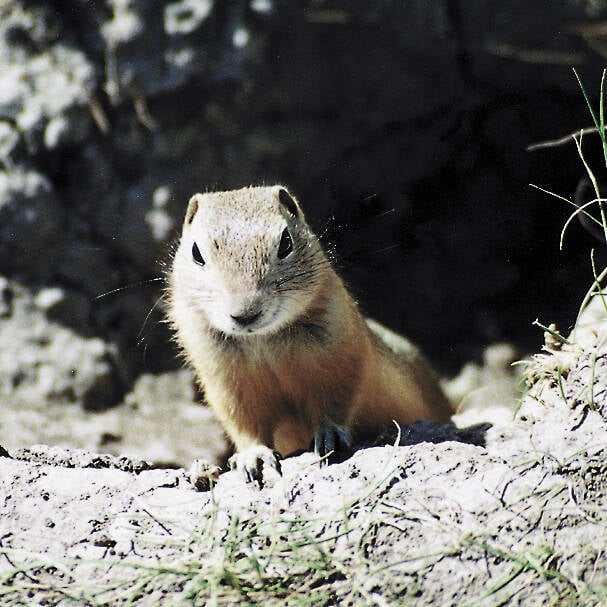The wetland plant absorbs pollutants and when harvested in the fall, provides a nutrient-rich biomass crop
BRANDON — Cattails have an amazing ability to absorb phosphorus, nitrogen and other elements that may harm natural water bodies and sediment beds. They serve the same vital function in treating wastewater.
While cattails may have tremendous potential, there are two factors standing in the way: water levels and nutrient saturation.
Water level is crucial. Cattails do not grow in lakes or marshes where water levels are too high. And they don’t perform their very best at absorbing pollutants when their roots are bound in the soil at the bottom of the water body. Both problems can be solved when the biomass bed is floating. With water swirling beneath the root system, the plants maximize their uptake of nutrients in the water.
Read Also

Sask. ag group wants strychnine back
The Agricultural Producers Association of Saskatchewan has written to the federal government asking for emergency use of strychnine to control gophers
However, cattails always max-out in terms of their ability to devour undesirable elements from the water. By the end of the summer, they’ve swallowed all the pollutants they can handle.

If cattails could be harvested in the fall, the absorbed nutrients could be transported to dry land. The pollutants would be permanently removed from the water body.
Plus, with tall vegetation gone, roots would be ready next spring to start all over again sucking up a new batch of undesirable elements.
But harvesting a water plant at the optimal time or any time is a mechanical challenge.
These are problems that Winnipeg inventor Mike Curry has been delving into for a number of years. He has developed a system to grow and harvest cattails for subsequent use in biomass energy conversion or as a compost mulch containing phosphorus and nitrogen for fertilizer on agricultural land.
“There’s no doubt we can use natural cattails to remove phosphorous and nitrogen overloads from wastewaters that contaminate waterways, stream, rivers and lakes,” says Curry.
“There’s a major difference between the effectiveness of a floating cattail bed and cattails growing naturally rooted to the soil on the wetland floor. For one thing, it’s difficult to harvest cattails rooted to the bottom of the water body.
“But if we can grow them on a floating bed, then we can wait until August when they’ve reached their maximum absorbtion of nutrients. August is when they’re richest in phosphorus and nitrogen. That’s when you pull the floating beds over to a harvest machine.”
Curry’s proposal is to construct numerous floating cattail bio-platforms. The floating islands absorb nutrients directly from the water between the raft and the lakebed.
The floating platforms could be positioned along any shoreline protected from destructive wave action. His system would be similar to a hydroponics grow op.
The bio-platforms are three metres wide and six metres long. They’re designed with modular flotation blocks encapsulated in polyfibre materials. Preset plug holes are positioned on the floating islands to allow individual plant growth. When the cattail crop reaches maturity, equipment would move each bed to the harvester located near shore.
The amphibious harvester platform is in a fixed position on the water with a channel that guides the floating cattail rafts through the cutting equipment.
The rafts have loops on each corner so they can be pulled to the receiving channel.
The cattails are then harvested at a predetermined height, leaving a short stem and the root for future growth. Once each floating bio-bed has been pulled through the harvester, it’s pulled back to its growing station, ready for the next growing season.
Curry said the harvester is actually a forage chopper on a floating raft, although the basic machine is anchored to the wetland floor. The bio-beds always stay in the pond. They’re never transported to dry land for harvest. The bio-mass runs through the shredding mechanism. A conveyor or a chute then dumps the bio-mass into a collection bin on the shoreline.
To get the plants in the floating bed started, Curry puts the cattail seeds or rhizomes into a growing medium that’s a mixture of peat, soil and sand. Once the plants have established, they’re moved out onto the floating beds to continue growing to maturity in the wetland.
“In year one, we establish the cattail root system. By year two they’re ready for harvest. After that, the crop is good virtually forever. There’s just the one-time investment in establishing the bio-platforms.
“The buoyancy of the bio-platform is a floatation device based on the limnocorrals and lake divider curtains we’ve been making for 40 years. These are the floating rings that aquatic researchers around the world buy from us. So we have a lot of experience in designing these durable rafts that stand up out in nature.”
Curry’s most recent research with the Cattail Bio-platform Harvesting System was lake water remediation at Loch Leven, Cypress Hills Provincial Park, with University of Regina in 2016.
He says more research projects are scheduled for southern Manitoba in 2017. Eco-West is proposing a new sustainable innovation pilot project in the rural municipalities of Tache, St. Anne and Hanover. The University of Manitoba will be the research partner.


















